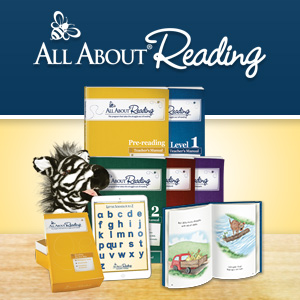Is your child ready to read?
As a reading specialist, one of the most common questions I encounter from parents is, "How do I know if my child is ready to read?" It's a valid concern because every child develops at their own pace, especially when it comes to literacy skills. While there is no one-size-fits-all answer, there are several signs that can indicate your child is on the path to reading readiness.
Before we get into what to look for let’s take a second and talk about age.
Age can play a role in reading readiness, but it's not the sole determining factor. While certain developmental milestones generally align with age ranges (e.g., most children begin to show these milestones between ages 4 to 7), readiness for reading is more about developmental readiness rather than age.
Some children may show signs of reading readiness earlier or later than others. It's important for parents to focus on the individual child's cues rather than comparing them to peers or expecting a specific timeline.
Providing a supportive environment that encourages exploration and enjoyment of books will help children develop the foundational skills needed for reading success whenever they are developmentally ready.
Here’s what to look out for:
1. Interest in Books and Print
Book Engagement: Does your child show interest in books? Do they enjoy being read to or looking at picture books on their own?
Recognizing Print: Can they point out letters or words in everyday environments (like on signs or cereal boxes)?
Pretend Reading: Do they pretend to read by making up stories based on the pictures in books?
Tips: Encourage this interest by reading together often and having a variety of age-appropriate books accessible at home. When reading, point at the words while you read! This helps kids understand that letters work together to form words.
2. Phonological Awareness
Rhyming Skills: Can your child recognize and generate rhymes? For example, can they identify words that rhyme with "cat" or create their own rhymes?
Syllable Awareness: Are they able to clap out the number of syllables in simple words (e.g., "ba-na-na" has three syllables)?
Tip: Play rhyming games and sing songs together to strengthen phonological skills.
Read more about Phonological Awareness here
3. Letter and Sound Recognition
Letter Knowledge: Can your child recognize and name some letters of the alphabet?
Sound Correspondence: Are they starting to associate certain sounds with letters (e.g., knowing that "b" makes the /b/ sound)?
Tip: Point out letters and their sounds in everyday situations (e.g., "Look, that sign starts with the letter 'S', just like your name Sam!").
Read more about Letter Recognition here
4. Print Awareness
Understanding Print Concepts: Does your child know how to hold a book, turn pages from left to right, and follow words on a page?
Environmental Print: Can they recognize familiar signs or logos?
Tip: Point out print in the environment (e.g., menus, road signs) to help them understand the purpose of reading. When reading a book to them, point to the words. This helps with left to right directionality.
5. Fine Motor Skills
Pencil Grip: Can your child hold a pencil or crayon with reasonable control?
Drawing and Writing: Do they enjoy drawing or attempting to write letters? Can they form lines, curves, and circles?
Tip: Provide opportunities for drawing and tracing, which can strengthen fine motor skills needed for writing. Letters are made out of lines, curves, and circles, so these are great to practice BEFORE beginning letter writing.
6. Listening Comprehension
Story Understanding: Can your child follow and understand simple stories or instructions?
Answering Questions: Are they able to answer questions about a story or a sequence of events?
Tip: Discuss stories you read together and ask open-ended questions to encourage deeper thinking.
7. Interest and Readiness
Emotional Readiness: Is your child eager and excited about learning to read, or do they show signs of frustration and resistance?
Persistence: Are they willing to try even when it's challenging?
Tip: Foster a positive attitude towards reading by making it enjoyable and not pressuring them to read before they are ready.
Let’s wrap it all up!
Reading readiness is a gradual process that unfolds differently for each child. It's essential to provide a supportive and nurturing environment where reading is encouraged but not forced. I have had so many students come to me already stressed out and opposed to reading. This is what we want to avoid by making learning fun and individual for your child.
By paying attention to these signs and nurturing your child's natural curiosity and abilities, you'll help set them on a path to becoming confident and enthusiastic readers.
If you have concerns about your child's reading readiness or want more personalized guidance, don't hesitate to reach out! Together, we can support your child's literacy journey and make it a rewarding experience for the whole family.
All About Reading Program
Want some step by step instructions on how to teach your beginner reader? Check out All About Reading! (I am an affiliate but love their program! It is one of the few I recommend!)









